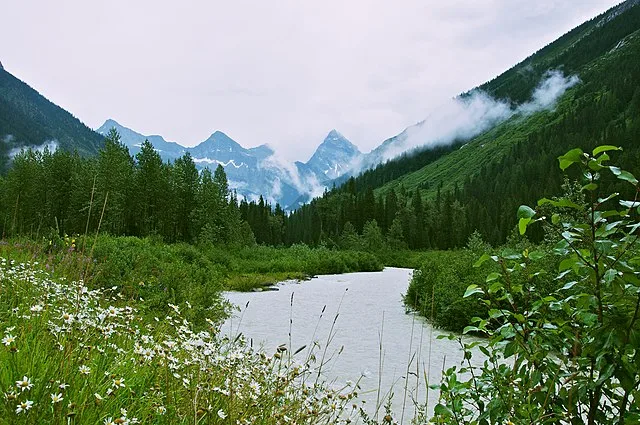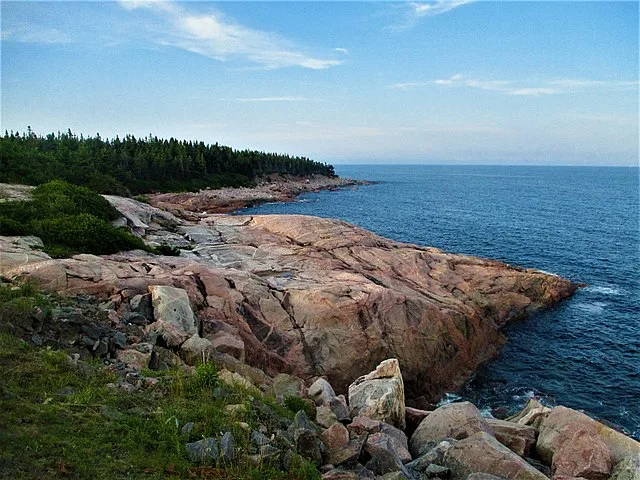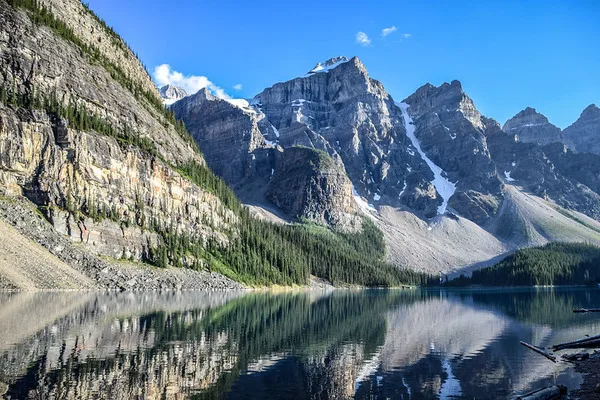A great source for a variety of valuable lessons and activity guides. The organization you have chosen has the following lessons and/or activity guides available:
Choose the lesson and/or activity you are interested in and simply click on the link to access the program material. Have fun as you expand your mind and start learning things you didn’t even know you didn’t know!
Government Of Canada – Parks Canada
GIS In Georgian Bay Islands National Park (Grades 7, 9, 12)
This GIS (Geographic Information Systems) classroom-based lesson plan will increase students’ understanding of the benefits and capabilities of GIS and how Parks Canada uses it as a tool to responsibly manage our national parks. The activity consists of a case study on Georgian Bay Islands National Park of Canada, and some of the unique issues that influence it.
Source: Government Of Canada – Parks Canada
Exploring Pukaskwa National Park Of Canada Using GPS (Grades 7-12)
This activity allows students go on a virtual camping trip to Pukaskwa National Park of Canada. Students will collect 10 Global Positioning System (GPS) readings in the park area known as Hattie Cove. Using the GPS readings, students are asked to create an interactive map for the park visitor centre which will highlight the 10 unique areas of the park. Detailed activity instructions, GPS readings and aerial photographs from Pukaskwa National Park are included as downloadable files.
Source: Government Of Canada – Parks Canada
The History Of Canada’s National Parks: Their Evolution and Contribution Towards Canadian Identity (Grades 10-12)
This document provides a “snapshot” of key eras during the establishment, evolution and current status of Canada’s system of national parks. Since the establishment of Canada’s first national park in 1885 (Banff), public use and management of these protected landscapes and ecosystems illustrate changing society perceptions of these special places. Suggested student research topics are provided in addition to a list of topic-related resources.
Source: Government Of Canada – Parks Canada
Glacier National Park Of Canada Fact Sheet

Author : naserke – wikimedia.org
Glacier National Park, established in 1886, is one of Canada’s most historic and iconic natural preserves. Located in the heart of the Selkirk Mountains in British Columbia, this park is renowned for its rugged mountains, pristine forests, and, as its name suggests, spectacular ancient glaciers. Covering an area of over 1,349 square kilometers, it offers a breathtaking landscape that attracts visitors and researchers interested in its unique ecological and geological characteristics.
Location and Accessibility
Glacier National Park is situated in southeastern British Columbia, Canada. It is accessible via the Trans-Canada Highway, making it easily reachable for both day visitors and long-term explorers. The nearest major city is Revelstoke, which is approximately 80 kilometers to the west, providing services, accommodation, and other amenities.
Climate
The park’s climate is heavily influenced by its mountainous terrain. Winters are typically cold and snowy, providing ideal conditions for winter sports but also posing risks such as avalanches. Summers are relatively cool and moist, with temperatures often moderated by the park’s elevation and glacial winds.
Geology and Geography
The park’s landscape is a dramatic mix of sharp peaks, deep valleys, and over 400 glaciers. It is part of the Columbia Mountains, and the geological processes that have shaped these landscapes are visible in its exposed rock formations and steep cliff faces. Glacier National Park is also part of the larger UNESCO World Heritage site which includes the Canadian Rocky Mountain Parks.
Vegetation and Wildlife
The ecological zones in Glacier National Park range from dense rainforests in the lower valleys to alpine tundra at higher elevations. These ecosystems support a diverse array of flora and fauna. The forests are dominated by western red cedar and hemlock in the lower elevations, transitioning to Engelmann spruce and subalpine fir as the altitude increases. Wildlife is abundant, including species such as mountain goats, grizzly bears, black bears, and a variety of bird species, making it a vital area for biodiversity conservation.
Visitor Activities
Glacier National Park offers a variety of recreational activities:
- Hiking and Camping: There are numerous trails ranging from short walks to challenging multi-day hikes. Backcountry camping is also available for those who wish to explore more remote areas.
- Mountaineering and Climbing: The park is a popular destination for mountaineers, offering a range of climbs from beginner to advanced levels.
- Skiing and Snowboarding: During the winter months, the park becomes a hub for skiing and snowboarding, with natural snow providing excellent conditions.
- Wildlife Viewing: The diverse habitats make it an excellent place for wildlife photography and bird watching.
Conservation Efforts
Conservation is a key focus in the park, with efforts directed towards protecting its sensitive environments and endemic species. Programs include monitoring glacier retreat, managing human-wildlife interactions, and restoring impacted areas to preserve the park’s ecological integrity.
Educational Opportunities
The park provides educational programs aimed at raising awareness about the importance of glacial environments and the impacts of climate change. These programs are designed for a range of audiences, from school groups to adult learners, emphasizing the role of protected areas in global ecological health.
Cape Breton Highlands National Park Of Canada Fact Sheet

Author : Mhsheikholeslami – wikimedia.org
Established in 1936, Cape Breton Highlands National Park marks one of Canada’s most enchanting natural treasures. Spanning the northern tip of Cape Breton Island in Nova Scotia, the park is famed for its spectacular highlands and ocean scenery. It covers an area of approximately 948 square kilometers, featuring a dramatic landscape where the mountains meet the sea.
Location and Accessibility
Cape Breton Highlands National Park is located in northern Cape Breton Island, Nova Scotia, accessible via the Cabot Trail, one of the world’s most scenic drives. The park has several access points, with the main visitor centers located in Chéticamp on the west side and Ingonish on the east.
Climate
The park experiences a maritime climate characterized by moderate temperatures. Summers are cool and pleasant, ideal for hiking and outdoor activities, while winters are mild with mixed precipitation, offering different recreational opportunities like snowshoeing and cross-country skiing.
Geology and Geography
The park is notable for its striking topography, which includes steep cliffs, deep river canyons, and highlands that rise abruptly from the Gulf of St. Lawrence. The geological history is rich, with ancient rocks and a complex landscape shaped by glacial and oceanic forces.
Vegetation and Wildlife
Cape Breton Highlands is home to a diverse mix of boreal, Acadian, and taiga habitats. Forests of sugar maple, balsam fir, and spruce are interspersed with areas of heath and bog. The park is also a critical habitat for Canadian wildlife, including moose, black bears, and the rare lynx. Birdwatchers might spot bald eagles, boreal chickadees, and the endangered piping plover along the coastal areas.
Visitor Activities
The park offers a wealth of activities that cater to all interests and fitness levels:
- Hiking: There are over 26 hiking trails that range from easy strolls to rigorous treks across diverse terrains.
- Camping: Visitors can choose from several campgrounds offering a range of services from backcountry sites to fully serviced campgrounds.
- Fishing and Boating: The park’s numerous rivers and lakes are ideal for fishing and boating activities.
- Beach Activities: Several beautiful beaches provide opportunities for swimming, picnicking, and relaxing by the sea.
- Winter Sports: In winter, the park’s trails are popular for snowshoeing and cross-country skiing.
Cultural Heritage
The park is not only a natural wonder but also a place of rich cultural heritage. It is a part of the traditional lands of the Mi’kmaq people, and the nearby communities offer a vibrant mix of Acadian, Celtic, and Indigenous cultures, particularly noted in local music, art, and festivals.
Conservation Efforts
Conservation initiatives in the park focus on protecting its unique ecosystems and the species that inhabit them. Efforts include habitat restoration, invasive species management, and environmental monitoring programs to track and mitigate the impacts of climate change.
Educational Opportunities
Cape Breton Highlands National Park offers various educational programs aimed at promoting environmental awareness and stewardship. These programs are tailored for different age groups and include guided hikes, interpretive tours, and workshops on the local flora and fauna.
Banff National Park Of Canada Fact Sheet

Author : Terry Ott – flickr.com
Banff National Park, established in 1885, is Canada’s first national park and a part of the larger Canadian Rocky Mountain Parks UNESCO World Heritage Site. Located in the province of Alberta, it spans over 6,641 square kilometers of breathtaking mountainous terrain, encompassing valleys, forests, meadows, rivers, and glaciers. It is not only a premier destination for outdoor activities but also a vital area for wildlife conservation and ecological research.
Location and Accessibility
Banff National Park is situated in the heart of the Canadian Rockies, approximately 128 kilometers west of Calgary, Alberta. The park is highly accessible via the Trans-Canada Highway and offers well-developed infrastructure, making it one of the most visited national parks in Canada.
Climate
The climate in Banff National Park varies with altitude and season. Winters are cold and snowy, perfect for winter sports, while summers are mild and brief, ideal for hiking and sightseeing. Spring and fall can be unpredictable, with weather changing rapidly, particularly in the high country.
Geology and Geography
The park is renowned for its stunningly rugged terrain, featuring prominent mountain peaks, numerous glaciers and ice fields, deep blue lakes, and extensive forests. The geology of the park is characterized by sedimentary rocks that have been thrust upward over millennia through tectonic activity, creating the dramatic mountain landscapes that are iconic to Banff.
Vegetation and Wildlife
Banff’s diverse ecosystems range from lush coniferous forests at lower elevations to alpine tundra at higher altitudes. The park is home to an abundance of wildlife, including large mammals such as grizzly and black bears, elk, moose, and wolves. Smaller animals and a variety of bird species also populate the park, making it a significant site for biodiversity.
Visitor Activities
Banff National Park offers a plethora of activities:
- Hiking and Backpacking: With over 1,600 kilometers of maintained trails, hiking is a favorite activity among visitors.
- Skiing and Snowboarding: The park boasts several world-class ski resorts, including Sunshine Village, Lake Louise Ski Resort, and Mt. Norquay.
- Wildlife Viewing: The park’s diverse habitats make wildlife viewing a popular and rewarding activity.
- Scenic Drives: The Icefields Parkway, stretching from Lake Louise to Jasper, is considered one of the most scenic drives in the world.
- Cultural and Historical Sites: Visitors can explore the Banff Park Museum, the Cave and Basin National Historic Site, and the Whyte Museum of the Canadian Rockies.
Conservation Efforts
Banff National Park is a leader in conservation, focusing on maintaining its ecological integrity while managing high visitor numbers. Conservation programs include wildlife corridors to ensure safe animal crossings, invasive species management, and strict development regulations to minimize human impact.
Educational Opportunities
The park offers a range of educational programs that teach visitors about the natural environment, cultural history, and conservation efforts. These include guided walks, interactive exhibits, and educational talks given by park staff and researchers.
Understanding Geographic Information Systems (GIS) – Land Use Mapping Of Point Pelee National Park (Grades 7-12)
This classroom activity includes a one page lesson plan along with 3 downloadable maps (vegetation and land use) from Point Pelee National Park data. Students use onion paper to understand concepts of G.I.S technology using manual mapping methods.
Source: Government Of Canada – Parks Canada
Conclusion
The provided resources from Parks Canada offer diverse educational materials for students of various grade levels, focusing on topics such as GIS, GPS, and the history of Canada’s national parks. The GIS lesson plan emphasizes the role of Geographic Information Systems in national park management, using Georgian Bay Islands National Park as a case study to illustrate GIS applications and benefits. Students can engage in hands-on learning experiences, such as the virtual camping trip activity in Pukaskwa National Park, which involves collecting GPS readings and creating interactive maps to highlight unique park areas. The history document highlights the evolution of Canada’s national parks since the establishment of Banff National Park in 1885, showcasing their contribution to Canadian identity and the changing societal perceptions of protected landscapes.
FAQs
How can students benefit from engaging with GIS and GPS activities?
Engaging with GIS and GPS activities allows students to develop spatial thinking skills, understand real-world applications of technology in environmental conservation, and gain hands-on experience in data collection, analysis, and visualization.
What are some examples of GIS applications in national parks?
Examples of GIS applications in national parks include habitat mapping, species distribution analysis, wildfire risk assessment, trail mapping and maintenance, visitor management, and natural resource monitoring.
How have Canada’s national parks evolved over time?
Canada’s national parks have evolved in terms of their establishment, management practices, public use, and societal perceptions. Since the establishment of Banff National Park in 1885, there has been a shift towards greater emphasis on conservation, biodiversity protection, and sustainable tourism.
Where can I find more information about specific national parks in Canada?
You can find more information about specific national parks in Canada on the Parks Canada website, which provides detailed park profiles, visitor guides, maps, and educational resources.